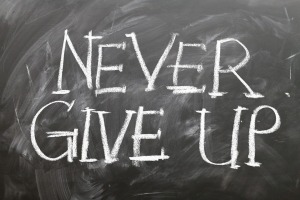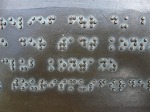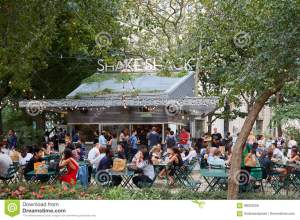Armed with a smile on my face and a white cane in my hand, I went back to school, the school for the blind. The whole campus was structured to teach blind people to do just  about anything without sight. It was incredibly challenging. I learned a few handy skills, but mostly I learned how insidiously seductive this world could be with all of its comfortable accommodations and adaptive devices. But I also learned that I had to find a way to adapt these new skills beyond the school grounds if I were to find my place in the world.
about anything without sight. It was incredibly challenging. I learned a few handy skills, but mostly I learned how insidiously seductive this world could be with all of its comfortable accommodations and adaptive devices. But I also learned that I had to find a way to adapt these new skills beyond the school grounds if I were to find my place in the world.
Within the confines of the campus, everything was pretty much rigged out to  accommodate the visually impaired. Signs were both in Braille and
accommodate the visually impaired. Signs were both in Braille and extra large print, computers were equipped with programs that read aloud, and there was ample lighting everywhere. And I was also introduced to a whole new set of non-visual cues and signals.
extra large print, computers were equipped with programs that read aloud, and there was ample lighting everywhere. And I was also introduced to a whole new set of non-visual cues and signals.
My first cue greeted me at the crosswalk in front of the school. While waiting for someone to happen by so I could ask if the light was green, I heard some rather odd-sounding bird chirps. It turns out that those chirps were meant to alert blind pedestrians when it was safe to cross. Frankly, I was never able to tell from which direction the chirping came, but I found the sound helpful, nonetheless, because I knew that the doors of the school were just a few short steps away. I did eventually learn to cross the street; I became cued in to the sound of vehicles. It was much easier to hear the direction from which cars approached than it was to figure out those chirps. And, of course, I always made sure to hold my white cane before me to signal to drivers that I couldn’t see them. So far, so good, though I have lost a cane or two from a couple of inattentive drivers.
The second signal I appreciated immediately and still do: I call it ”seat-slapping.” One of the hardest tasks I found in my daily life was figuring out where to sit in public places.  Almost any place I walked into presented this problem: lobbies, restaurants, bars, theatres, offices, even private homes. In the world of the blind, it seemed that everyone was fairly well acquainted with the practice of slapping a nearby available seat in response to the approach of a blind person. The gesture was natural, unobtrusive and an easy cue to follow. I didn’t have to awkwardly fumble about tapping with my cane to find a chair to sit on, I could simply follow the “slapping” sound. I haven’t really found an adequate cue to follow in the “real” world; I am forced to fall back on my smile and the kindness of a passing sighted person. I admit, I still feel awkward, but at least I usually end up finding a seat.
Almost any place I walked into presented this problem: lobbies, restaurants, bars, theatres, offices, even private homes. In the world of the blind, it seemed that everyone was fairly well acquainted with the practice of slapping a nearby available seat in response to the approach of a blind person. The gesture was natural, unobtrusive and an easy cue to follow. I didn’t have to awkwardly fumble about tapping with my cane to find a chair to sit on, I could simply follow the “slapping” sound. I haven’t really found an adequate cue to follow in the “real” world; I am forced to fall back on my smile and the kindness of a passing sighted person. I admit, I still feel awkward, but at least I usually end up finding a seat.
The school also had a system of audible signs. News items and activities were read over the intercom, food choices at the cafe were announced, scheduling changes were broadcast, in short, everything normally to be found in written form was served up audibly. There was a library filled with TV shows and movies complete with Descriptive Video Service commentaries. And there was even a phone number to call to have newspaper and magazine articles read aloud. I miss this world of audible signs; I’m grateful every time I hear a little voice over an intercom or loudspeaker; and, I resign myself to the rest and just hope I don’t miss out on too much.
These cues and signals at the school were welcome, but they didn’t always extend beyond the confines of the campus. This world with all of its accommodations was very seductive. To live, work and remain in this environment would have been easy and comforting, but terribly limiting and small. I was not prepared to walk away from everything I knew and everything I had yet to discover in the world at large. So I began to learn to pick up new signals and to navigate with my white cane adapting cues I’d learned at the school and using my new skills to recognize similar signals found beyond the borders of the school for the blind.
Check out my next post: “Raising Cane or DisOrientation and Mobility”



Another stunning and informative piece for those of us who are sighted. Thank you, Julia
LikeLiked by 1 person
Thanks Dee!
LikeLike
Julia, this is really good, you can turn this into a book!!
C
LikeLiked by 1 person
Thanks so much, I’m glad you’re enjoying it!
LikeLike
Great article, Julia. Thank you for giving us an insight into this world which is unknown to many of us. In one of your articles you might consider giving sighted people some tips on ways to interact with the blind to make social interactions easier… just a thought.
LikeLiked by 1 person
Great idea! Thanks so much. I think it will fit nicely into my next article, Raising Cane.
LikeLike
This article is very helpful to the sighted. We don’t usually think of all the small details in life that are cumbersome to the blind yet simply taken for granted to us. Thank you for this small enlightenment.
LikeLiked by 1 person
Thanks for visiting the site! I’m so glad you found it helpful.
LikeLike
Enjoy reading your posts!
Trust this finds you well!!
johnny
LikeLike
Glad you like them!
LikeLike
🙂
LikeLike